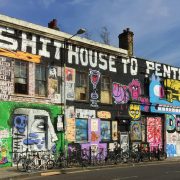Gentrification: London’s Cultural Health

The majority of London is in the process of gentrification; the accommodation of middle-class citizens at the expense of the working class. On a tangible level this is a hipster boutique replacing a local resident’s cafe (pronounced ‘kaf’), a Starbucks replacing an Afro-Carribbean hair shop. Or the local Bashment nightclub gradually playing less Bashment.
The process of gentrification isn’t necessarily one of bad intent. It’s usually an economical decision, an attempt to renovate an area to reduce crime and increase neighbourhood tax income. In the areas most effected by gentrification (such as Hackney, Tower Hamlets, Newham), the average salary increased by 20% (from 2010-2016).

This is all sunshine and rainbows on the surface, but at what point does this ‘economical decision’ impact the cultural health of an area? Yes, the average salary has improved, but equally the cost to live in London has become near extortionate. Yes, the parks are aesthetically pleasing and photogenic but not so much when they’re built on remains of cultural landmarks. On a non-tangible level, the politics of this process is much deeper.
One of the most recently renovated areas in Newham, is Stratford, following the 2012 Olympics. Westfield, Stratford itself has also undergone a series of improvements. The shopping centre offers many high-priced shops, champagne bars and fine dining; attracting many tourists to fulfil their retail needs. Yet directly opposite, the Stratford Centre has become an unofficial homeless centre. A direct result of London’s housing crisis.
What is the cost of imported Colombian coffee and concierge apartment complex on the traditions of British culture, more specifically Black and Asian British culture?
Those who spent their whole lives living in the same area are now being forcibly removed. because they simply cannot afford it anymore. We are less likely to see ‘cultured’ shops, community centres or clubs in the areas affected. The sense of community and distinct cultural traditions that were once so familiar are becoming fragmented.
These extortionate living prices, will arguably increase the rates of shoplifting/theft. People turn to crime as means to survive. Destruction of community spaces destroys community itself. Inevitably, this affects the mental health of residents, leaving them feeling alone and out of place.
What’s the solution? Many Borough’s offer community projects within sport, arts and culture. Perhaps these are the only way we can salvage what’s left of the ‘community’.

